
You are less likely to learn your ancestors were heroic leaders among men than you are to find the family patriarch described as "ane godless, drunkin, and deboshit man" or as Sir Walter Scott describes the person as "one of the darkest characters of that dark age".
IN THE BEGINNING
Unless your family is famous or you are royalty, it’s hard to trace your specific blood relatives more than a few hundred years back. Most amateurs end up tracing the history and location of the family surname. Soon you find the family name has been spelled a dozen different ways in different dialects or languages, and that the same or similar surnames have settled in many locations throughout a country or multiple countries.
There are many many branches to everyone’s family.
CLAN ▼ LOGAN
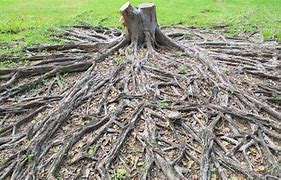
Image Credit: allseasontreeservicealberta.ca/tree-root-problems
I never got anywhere with it. Oh, there is definitely a figure in history named Benjamin Logan, and some of the family names even match up, but unfortunately the dates and locations are too garbled for me to proceed. Besides, after I read that he, under military orders, seized and burned thirteen Indian villages, I didn’t want to claim any connection.
That was when I decided I’d have to settle for the origin of the name. Much easier and less bloody. Alas, that was not the case. You’ll see.
CLAN LOGAN
The history of Scotland is fascinating and bloody, primarily due to the nature of the clan system which had grown firm and tangled roots as early as the 1300s.
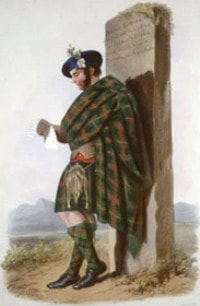
The system remained largely intact until the time of the bloody Battle of Culloden in 1746, where the Jacobite rebellion was mercilessly crushed by the royal troops of King George II.
By this point, improved trade and communication links between northern and southern clans were already leading to the dilution of the clan system and the infamous Highland Clearances effectively signalled the end as thousands of Scottish land workers sought the promise of a better life on distant shores.
Official Status
In Scotland, the Logan Clan does not have a Chief recognized by Lord Lyon King of Arms, and is therefore is called an Armigerous clan. Before 1745 all chiefs had Coats of Arms; however, not all of these are recorded in the Public Register of All Arms and Bearings in Scotland, which was only established in 1672. Today Clan Logan is chiefless.
Coats of Arms
Being without a clan chief has serious ramifications in Scotland. Coats of Arms in Scotland can only belong to one person at a time. There is no single coat of arms which all people with the same name can use. A “'family coat of arms” is a non-existent misnomer because the whole concept of coats of arms originated to identify an individual person
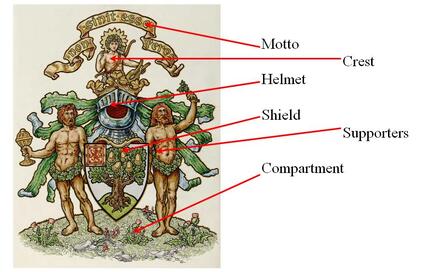
A family crest is not the same, only an element of part of a coat of arms.
Image Source: scotlandspeople.gov.uk/record-coats-arms
Most personal Coats of Arms consist of a shield, helmet, crest and motto. Supporters, the figures or beasts standing on either side of the shield, are only granted to particular groups of people.
The Public Register of All Arms and Bearings in Scotland records all coats of arms in Scotland from 1672 to the present day and it is added to daily. Coats of arms cannot be used legally in Scotland unless they are recorded in that Register. The Register is maintained by the Court of the Lord Lyon, the office responsible for heraldic matters in Scotland, and a great deal of genealogical information is required to register a new one or use one of an ancestor.
According to Wikipedia, these are the Logan Crest is a passion nail piercing a human heart, and the Logan motto is HOC MAJORUM VIRTUS (Latin for "This is valor of my ancestors. Their slogan is Druim-nan-deur (Scottish Gaelic for "The ridge of tears").
Similar to the branches of the tree shown above, describing Clan Logan ‒ or any other, for that matter ‒ is a tangled mess. Dealing with both name and location are difficult because they are so intertwined and have so many variants of each.
Common belief is that Clan Logan originated in both the highlands and lowlands of Scotland, with no historical connection between the two. Another Clan Logan is prominent in Ireland, also with no tie to the other two branches.
That alone leads one to surmise that there is a connection further back in history: the Normans. The “de Logan” family existed in Normandy even before the 1066 invasion by William the Conqueror, and several “de Logans” accompanied Richard de Clare on his invasion of Ireland in 1170. Later in history, many Scottish family groups of highland stock emigrated to Ireland during the Plantation of Ulster in the early 17th century, after the surname Logan was well established.
The Irish believe the name Logan derives from the Gaelic surname O'Leoghain which translates to “the descendant of the warrior.”
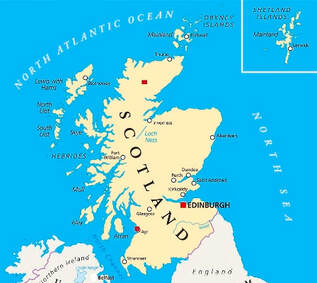
Image Source: images.fineartamerica.com/scotland-political-map
In the lowlands, the surname Logan is a territorial name, and believed to be derived from the lands of Logan in present Ayr, Scotland. Later, the clan center was Restalrig, Scotland, which is now a suburb of Edinburgh.
SCOTTISH NAMES
A Scottish surname may or may not originate with a Clan. It can also be derived directly from ancient Gaelic or even from a profession you ancestors did, which makes it even harder to decipher where any particular Scottish name came from.
Place Names
Place names, often called territorial or habitational names, derive from location or type of location. For example, the name Craig derives from the Gaelic word "creag" which means crag or rocks. The name Logan (from the lowlands) is also a place name originating from the Gaelic word "lagan" which means either little hollow or signifies a hollow place, plain, or meadow, encircled by rising ground. As a place name, it is common throughout Scotland.
Personal Features
Names can also be based on individual features, the way a person may be described. The name Cameron comes the Gaelic words “cam” and “sròn” (camshròin) which means “crooked nose”.
Profession
Last names can also be derived from an individual’s or family’s profession. The names Lister, McInlester, Lidster, McLeister, Laister, Litster all originated with the profession of dying fabric. A Webster was a weaver of cloth, and so on. Baker originated with someone or a family who bakes.
Children usually worked in the same profession as their parents, and crafts where handed down mother to daughter, so it’s simple to deduce that families would become associated with that activity. Perhaps, small villages had only one family who dyed cloth or baked.
Patronymics
A Scottish surname can also trace its origin to derivations of the name of the father or ancestor, typically by the addition of a prefix or suffix: e.g. Johnson, O'Brien, Ivanovich.
Patronymics is the basis for Russian surnames. If you have ever read a Russian novel and had problems figuring out who all the characters were, this confusion results from patronymics plus the fact family relationship in Russian also dictate what name is used by which relative. Very complicated. In Scotland, the process is simpler. For example, Peter has a son called John - John's surname becomes Peterson (Peterson's son). I’m not sure what happens if John then has a son of his own.
Mac and Mc are prefixes that mean “son of”. Both are used in Scotland and Ireland. It is not true that Mc is Irish and Mac is Scottish. Folk history has claimed that these prefixes designate illegitimacy status, but there were no references I found to corroborate that Folk Rumor.
Variants
To complicate matters, there are numerous variations to the spelling of each name.
Surnames related to Clan Logan include: Lagan, Laggan, Leonerd, Loban, Lobban, Loben, Logane, Logan, Logen, Loggan, Loggane, Loggans, Loghane, Logie, Loggie, Loggins, Loghyn, Login, Logyn, Lohan, Lopan, Lowgan, Lyndon – to name only some of them.
MAKE YOUR NAME MEAN SOMETHING
Andrew Carnegie, a Scott himself, advised “Make your name mean something.” He came to America and did just that.
Quite a few of other Logans did make a name for themselves, and the lowland Logans became Scottish Royalty for a while. There are many Robert Logans in the southern clan, which makes following bloodlines rather difficult, and many dates of birth and heritage seem to be inconsistent, depending on the source.
1200s
● The first written record identifying a lowland Logan is Robert Logan (from Ayrshire) who is recorded as witnessing the resignation of the lands of Ingilbristoun in 1204.
● In 1296, at least four Logans signed the “Ragman Rolls” to pay homage to Edward I of England: Phelippe de Logyn (burgess from Montrose), Thurbrandus de Logyn (from Dumfrieshire), Andreu de Logan (from Wigtonshire), and Wautier Logan (from Lanarkshire).
● In 1298, Walter (possibly another spelling for Wautier) Logan of Hartside received a grant of the lands of “Lus” form Robert the Bruce.
1300s
● The same Walter Logan, Lord of Hartside, was sheriff of Lanark in 1301. This Walter Logan appears twice on a roll of landowners forfeited in 1306 by Edward I, for supporting Robert the Bruce. In the same year a man named Dominus Walter Logan was taken prisoner by the English forces and hanged. This sounds suspiciously like a relative, but probably not Wautier himself, since he later petitioned for the return of his confiscated lands.
● Sir Robert and Sir Walter Logan were among the Scottish nobles who in 1329 set off on a pilgrimage headed by Sir James Douglas. Douglas’ mission was to take the heart of the dead King Robert I of Scotland (Robert The Bruce) to the Holy Land. Both Logans were killed in the Battle of Teba (1330) fought against the Moors in Andalucía in Spain.
▲Image Source: ▲ Source of Imagespinterest.com/pin/557390891378956037/ ▲
ites.google.com/site/loganfamilyhistory
At this point in history, it is necessary to go back in time to explain how the Logans became the Barons of Restalrig. According to some sources, Restalrig The Barony of Restalrig passed in an unbroken line through 2 families from the 11th century to the 17th, the two being joined through in the middle through marriage. The first Barons were the de Lestalrics, who passed the keys of Lochend castle to Logans in the 14th century. Both these families pop up repeatedly in Scottish history and were generally always loyal to the Scottish Crown.
Image Source: pinterest.com/pin/Lochend Castle
● Robert Logan, the 1st Baron of Restalrig under the Logan Clan, was born about 1345 in Ayrshire, Scotland, son of Robert Logan of Cunningham and Katherine De Restalrig. In 1365 he married Princess Katherine Stewart, daughter of Robert II of Scotland, and later was appointed as Admiral of Scotland. The lowland Logans claim descent from this Robert Logan, who at this time was royalty.
1400s
● Second Baron of Restalrig, John Logan of Grogar. (1420 – 1451).
● A Sir Robert Logan was one of the hostages given in 1424 to free James I of Scotland from being held in England. Robert's son or grandson, John Logan of Restalrig, was made principal sheriff of Edinburgh by James II of Scotland.
● Third Baron of Restalrig, Robert Logan. (1445 – 1498).
● Fourth Baron of Restalrig. (? – 1513) He died on September 9, 1513, at Flodden, Northumberland, England, killed in the Battle of Flodden Field.
1500s
● Fifth Baron of Restalrig, Robert Logan. (1503-1543).
● Sixth Baron of Restalrig, Robert Logan (1533-1561). In 1555 Logan of Restalrig sold the superiority of Leith (the principal seaport of Edinburgh) to the queen regent Mary of Lorraine (aka. Marie de Guise).
● Seventh and Last Baron Restalrig, Robert Logan. (1555 – 1606). This Sir Robert Logan was not well liked and had an unsavory reputation, but he had great wealth and power. His only allegiance sHe was described by contemporaries as "ane godless, drunkin, and deboshit man". Sir Walter Scott described him as "one of the darkest characters of that dark age."
In history he is famous for his supposed involvement in the Gowrie Conspiracy, a plot to assassinate King James VI of Scotland. The attempted assassination took place in August 1600. The plot was thwarted, and the principal conspirators killed.
Logan, who was not present at the actual assassination attempt, died six years later. After an eight year lag, in 1608, suspicions were raised that Logan had been involved in the plot to assassinate King James VI.
Logan was summoned to appear in court and his body exhumed and physically laid before the court. (Apparently that wasn’t all that unusual then). With Logan in no position to defend himself, his secretary Sprot was tortured for his confession of guilt. In 1609 Logan’s bones were found guilty on the flimsiest of evidence, athough there was no real proof that he had anything to do with the conspiracy. All his lands and wealth were forfeited to the king.
Thus ended the Baronly of Restalrig…at least as far as the Logans were concerned. After that, apparently many Logans emigrated to American, Australia, and Canada.
A WORD ABOUT CLAN TARTANS
“Plaid” is derived from the Scottish Gaelic word plaide, which means “blanket.” “Tartan” means a woven pattern in fabric made of crisscrossed horizontal and vertical bands in multiple colors.
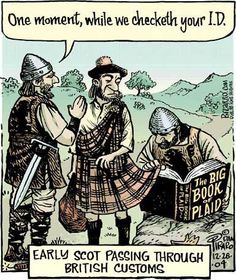
It wasn’t until 1703, when Martin Martin wrote the book A Description of the Western Islands of Scotland, that tartans were identified as a possible way of distinguishing inhabitants of different regions of Scotland.
Image Source: scotsusa.com/funniest-scottish-images
During the Scottish Rebellion of 1745, tartan was used in the uniforms of the leading Scottish military troop, The Royal Highland Regiment, or the Black Watch. The green and dark blue patterns became strongly associated with rebellion. However, depictions of the Battle of Culloden in 1746 show the monarchy’s forces battling against the clansmen, all wearing different tartans.
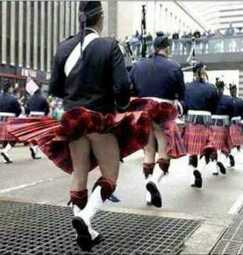
By the time the law was repealed, tartan kilts were no longer the ordinary dress of the highlands. The tartan kilt was, however, adopted as the symbolic national dress of Scotland, which revived interest in tartans and one’s Scottish heritage. According to Wikipedia – who agrees with my tour guide in Scotland – the clan tartans date no earlier than the beginning of the 19th century. They are an invented tradition. And that's the bottom line.
JUST SAYIN'
□
□
Sources:
http://fionamsinclair.co.uk/genealogy/HighlandClans/Logan.htm
https://www.visitscotland.com/see-do/research-your-ancestry/clans/
https://www.visitscotland.com/info/see-do/clan-maclennan-p1475101?prodtypes=attr&loc=Scotland&cat=clanattr
https://en.wikipedia.org/wiki/Battle_of_Culloden
https://www.houseofnames.com/blogs/mac-prefix
https://en.wikipedia.org/wiki/Highland_Clearances
http://www.stravaiging.com/history/castle/lochend-castle
http://www.marariley.net/celtic/SentToKass/Scotland.htm
http://www.britannica.com/topic/Mac-surname-prefix
https://restalrigia.wordpress.com/
https://www.thereformation.info/gowrieconspiracy/
https://en.wikipedia.org/wiki/Leith#:~:text=The%20medieval%20settlements%20of%20Leith%20had%20grown%20into,The%20Shore%20area%20in%20the%20late%2020th%20century.
https://ancestors.familysearch.org/en/LHNC-WGS/robert-logan-1st-baron-of-restairg-1345#:~:text=Robert%20Logan%201st%20Baron%20of%20Restairg.,about%201345%E2%80%93%20Ayrshire%2C%20Scotland%2C%20United%20Kingdom
https://nameenthusiast.blogspot.com/p/occupational-names.htmlhttps:/www.bing.com/search?q=Battle%20of%20Culloden%20in%201746&pc=cosp&ptag=G6C999AD7DA6ADE9E&form=CONMHP&conlogo=CT3210127
https://www.scotlandspeople.gov.uk/record-guides/coats-arms#:~:text=Coats%20of%20Arms%20in%20Scotland%20can%20only%20belong,one%20person%20could%20use%20exactly%20the%20same%20design.
http://www.4crests.com/logan-coat-of-arms.html#:~:text=Logan%20Coat%20of%20Arms%20%2F%20Logan%20Family%20Crest.,Bruce%2C%20on%20their%20way%20to%20the%20Holy%20Land.
https://www.tribstar.com/news/lifestyles/genealogy-difference-between-family-crest-coat-of-arms/article_7a969139-7867-5560-afc1-e40cb16ad5a3.html#:~:text=Although%20some%20people%20refer%20to%20a%20%E2%80%9Cfamily%20crest%E2%80%9D,the%20shield%2C%20usually
Photos only
https://www.allseasontreeservicealberta.ca/b/how-to-tackle-the-most-common-tree-root-problemsp
https://www.planetware.com/map/scotland-clans-of-the-scottish-highlands-and-lowlands-map-sco-sco32.htm
https://images.fineartamerica.com/images/artworkimages/mediumlarge/1/independent-scotland-political-map-peter-hermes-furian.jpg
https://www.pinterest.com/pin/41658365289985372/?autologin=true&lp=true
http://www.stravaiging.com/history/castle/lochend-castle
https://www.scotsusa.com/media/12-of-the-funniest-scottish-images-and-cartoons-in-one-post/
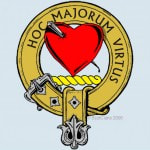
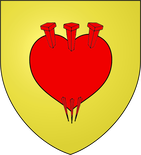
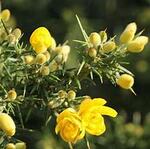
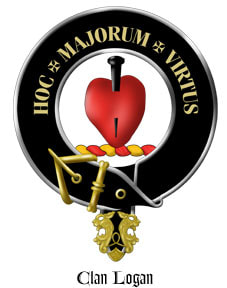
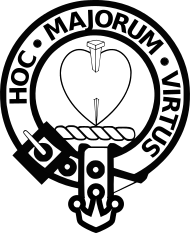
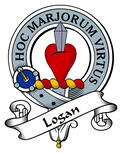
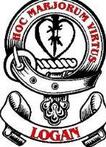
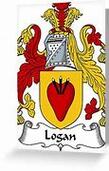
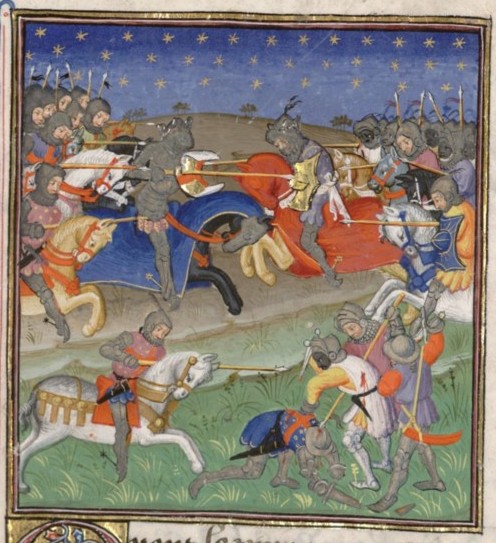
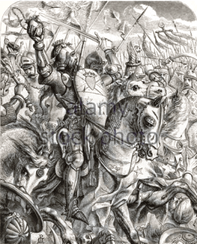
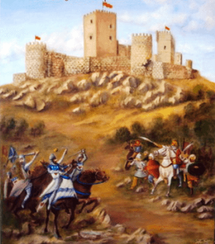
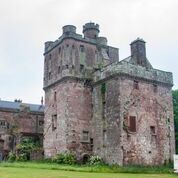
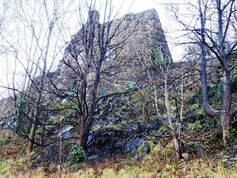
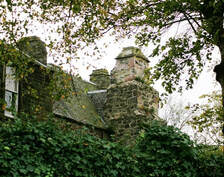
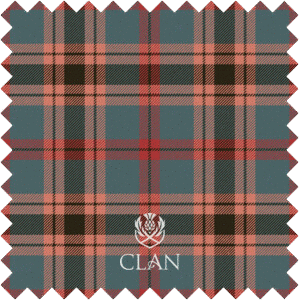
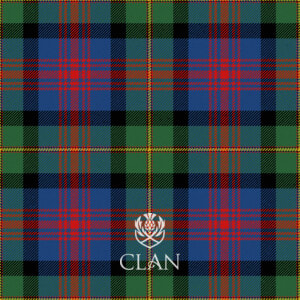
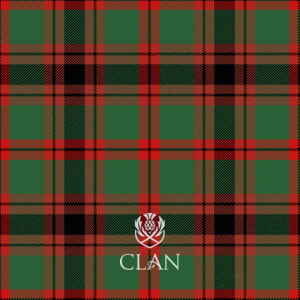
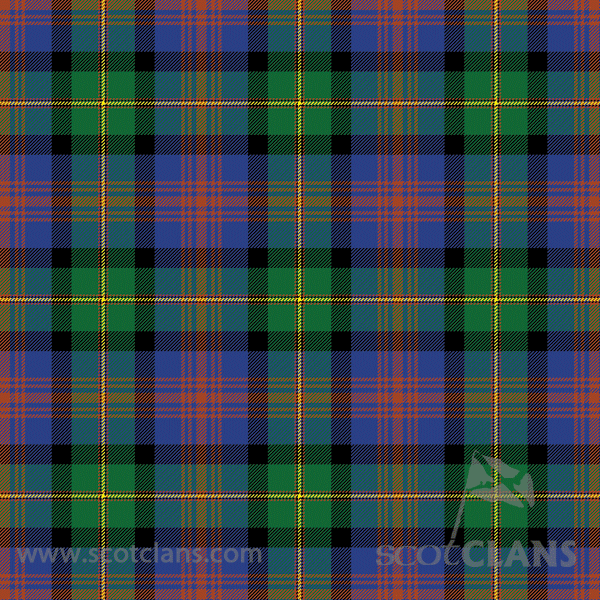
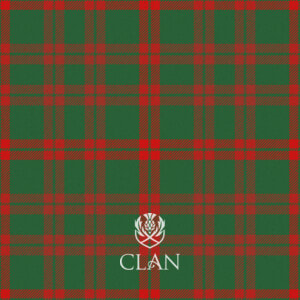
 RSS Feed
RSS Feed